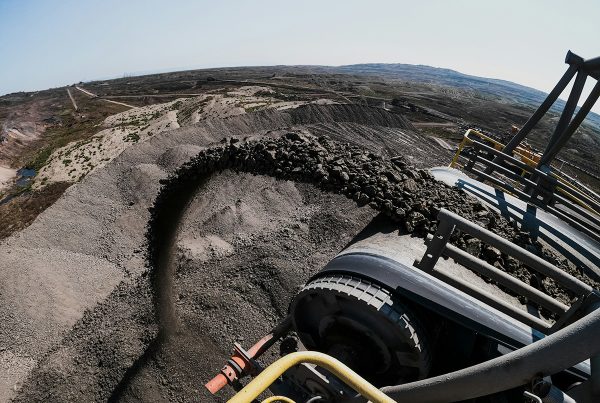When we think of parking lots, we think of drab, boring, even ugly spaces permanently set in cement. The fate of parking lots is to act as an intermediary: a place where we temporarily leave our cars so we can go inside a building. It’s that simple.
On an environmental perspective though, parking lots are never simple. They might look harmless enough, but parking lots really aren’t the most eco-friendly space in an establishment’s premises. Remember Joni Mitchell’s woes in Big Yellow Taxi: “They paved paradise and put up a parkin’ lot.”
That was in 1970, but it still holds true now more than ever.
This 2012 alone, over 60 million cars is expected to be produced. That’s a lot of cars. No wonder parking lots in malls and other establishments are becoming bigger and bigger in an effort to accommodate all those cars. We often take parking lots for granted, and assume they’ve always been there, not really thinking that that paved surface might indeed have been a paradise once, which has now been, well, cleared just so gas-guzzling, fume-spewing cars can park comfortably.
If your company is planning on constructing or renovating a parking lot, here’s how you can go green in the process:
1. Switch to alternative pavers. Instead of all-asphalt or concrete, use brick, cobblestones, gravel, pebbles, wood mulch, turf blocks, natural stone, and grass paving blocks. All-concrete parking lots are impervious to stormwater. This is not a good thing because rather than being soaked and naturally filtered by layers and layers of soil, sand, rock, and microorganisms to become part of the groundwater supply, stormwater simply runs off on the surface, carrying whatever pollutants there are along the way. So you see, traditional parking lots act as barriers to the normal ecological life cycle of water, which is why permeable, porous pavers are the more eco-friendly choice.
2. Bioretention, anyone? Once you’ve switched to alternative pavers, you might want to consider bioretention as well—especially when we’re talking about large areas used for parking lots. Basically, bioretention is engineering your parking lot so that stormwater is effectively channeled into a shallow area, filtered, and then collected into a drainpipe to be later discharged into a river, stream, or another stormwater facility.
3. Minimize the dimensions. Reducing the length and width of individual parking stalls means you can accommodate more cars on less paved land. Individual parking stalls set by most local parking codes are more than large enough to accommodate those humongous SUVs, so you can still reduce the dimensions without alienating SUVs.
4. Work around existing trees. Trees getting in the way? Plan the parking lot so that existing trees don’t have to be cut at all just to make space for a car. A parking lot set in cement all throughout is not just an eyesore, it also is a chief culprit in the so-called urban heat island effect, wherein the black pavement absorbs and intensifies city heat. Plants and trees address that problem, aside from beautifying and softening the hard landscape of a parking lot.
So while you’re at it, consider xeriscaping the parking lot with hardy, drought-resistant plants, shrubs, and trees so you don’t have to use plenty of water just to maintain a garden. Say NO to high-maintenance lawn. And now that you’re using porous pavers, you can be sure your plants and trees have enough groundwater to live on.
5. Encourage biking to work. Commuting to work is great, but biking to work is even better. When green parking lots offer bicycle stands where people can park their bikes safely, everyone will be encouraged to bike to work instead of using their cars. And you have to admit, it’s good for the heart.
Make office hours flexible, if you must, in consideration to bikers.
6. Share the parking space. It’s plain silly to devote an entire parking lot for use by just one business establishment. The more businesses that can effectively share use of the parking space at different times of the day, the better. The parking lot can be used during the day by one establishment, by another during nights, and another still—a church, perhaps, for its churchgoers—on Sundays. No reason to be selfish about it.













Great article, though I see an engineering challenge with item 4. Are there materials that would resist buckling due to root action or would it be best to use pavers, brick, ect. to allow easy removal of problematic roots.
On that note, one may need an arboriculturist to make sure removing roots doesn’t kill the tree!
Thanks for posting our first comment Dan!
You’re absolutely right. A landscape designer and preferably an arboriculturist should be consulted especially when space restrictions require the project to have car parks and trees in close proximity. The introduction of green features like vegetation swales is another great way to separate the spaces that trees need to grow from the paved areas, ensuring roots have enough water filtration (and room) to survive.
In the end, designing WITH nature instead of against it will save you money and generate value to your property. A great example of this is naked Stables (see our projects under Hospitality). They chose specific locations on their site to build the villas and other hotel structures where land was already disturbed. They also built around existing trees and even incorporated them within their designs (e.g. some trees can be seen going through parts of the decking and walkways). This not only creates a pristine environment that is enjoyable for guests but the shading helps greatly to save energy in the summer.
The options are endless when you start early and think outside the box!
Parking areas also represent an ideal area under which to put the underground heat exchanger component of a Ground Energy System (GES), also often referred to Ground Source Heat Pump system. GES is a clean technology that provides energy efficient space heating and air conditioning to buildings. A GES replaces conventional chillers, boilers or city heating systems, by using thermal energy from the ground as a free source of renewable energy. The technology comprises an underground piping system that acts as a thermal energy exchange through the circulation of clean water, which is brought to the surface at a constant temperature between 15°C and 20°C where heat pumps adjust the water to the required temperature so it can be used to heat or cool the building efficiently. Parking and landscape areas make an ideal location to install the underground loop system without any impact on the surface use.